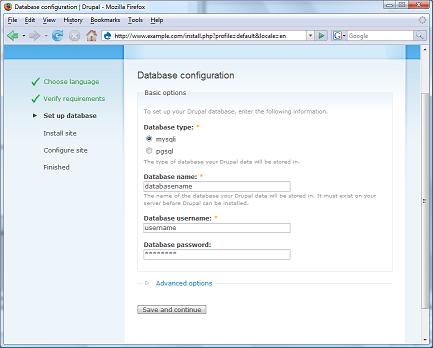Adding a Virtual Drupal Site to a Fully Segregated Drupal Farm
by Tarek_Loubani in Design > Websites
1237 Views, 2 Favorites, 0 Comments
Adding a Virtual Drupal Site to a Fully Segregated Drupal Farm

The Drupal is a Content Management System (CMS). One of its distinguishing features is the ease of managing a number of sites from one codebase - the much vaunted Drupal Farm.
This instructable will be aimed at helping you create a fully segregated site within a drupal farm using commonly available tools such as phpMyAdmin to manage the SQL portion. It is assumed that the reader has basic knowledge of Drupal and Linux, as well as shell access with sufficient privileges.
This instructable will be aimed at helping you create a fully segregated site within a drupal farm using commonly available tools such as phpMyAdmin to manage the SQL portion. It is assumed that the reader has basic knowledge of Drupal and Linux, as well as shell access with sufficient privileges.
Creating an SQL Database and User

The first step will be to create an SQL database and user. To do this, go to your phpMyAdmin instance and login.
Next, create the user and database by going to Privileges and selecting Add a new user from the bottom of your user list.
In this window, be careful to select the right settings so you can keep your SQL server secure! Hover over the fields in the image to get an idea of what the right settings should be. To re-iterate them here, select "local" for the host, and generate a password (Do not choose your own, as random passwords are always better).
Once the password is generated, copy it to your clipboard for later use.
Lastly, select "Create database with same name, and grant all privileges" to create the database.
Next, create the user and database by going to Privileges and selecting Add a new user from the bottom of your user list.
In this window, be careful to select the right settings so you can keep your SQL server secure! Hover over the fields in the image to get an idea of what the right settings should be. To re-iterate them here, select "local" for the host, and generate a password (Do not choose your own, as random passwords are always better).
Once the password is generated, copy it to your clipboard for later use.
Lastly, select "Create database with same name, and grant all privileges" to create the database.
Set Up the Drupal Site Settings

Now it's time to set up the Drupal site.
First, go to your Drupal sites directory.
Copy the default directory to your site name, and create a files directory with appropriate permissions. For this example, we'll use the site "mytestsite.com". For rules on how to name the directory, take a look at these Drupal multisite instructions:
# cp -R default mytestsite.com
# mkdir mytestsite.com/files
# chown www-data.www-data mytestsite.com/files
# chmod 777 mytestsite.com/settings.php
Now, you can use the usual procedure to setup the site.
Beware! If you see errors indicating the "default" settings are being edited, then something is wrong. Recheck your steps until this point.
First, go to your Drupal sites directory.
Copy the default directory to your site name, and create a files directory with appropriate permissions. For this example, we'll use the site "mytestsite.com". For rules on how to name the directory, take a look at these Drupal multisite instructions:
# cp -R default mytestsite.com
# mkdir mytestsite.com/files
# chown www-data.www-data mytestsite.com/files
# chmod 777 mytestsite.com/settings.php
Now, you can use the usual procedure to setup the site.
Beware! If you see errors indicating the "default" settings are being edited, then something is wrong. Recheck your steps until this point.
That's It!
Go about the other steps in setting your site up, and enjoy!